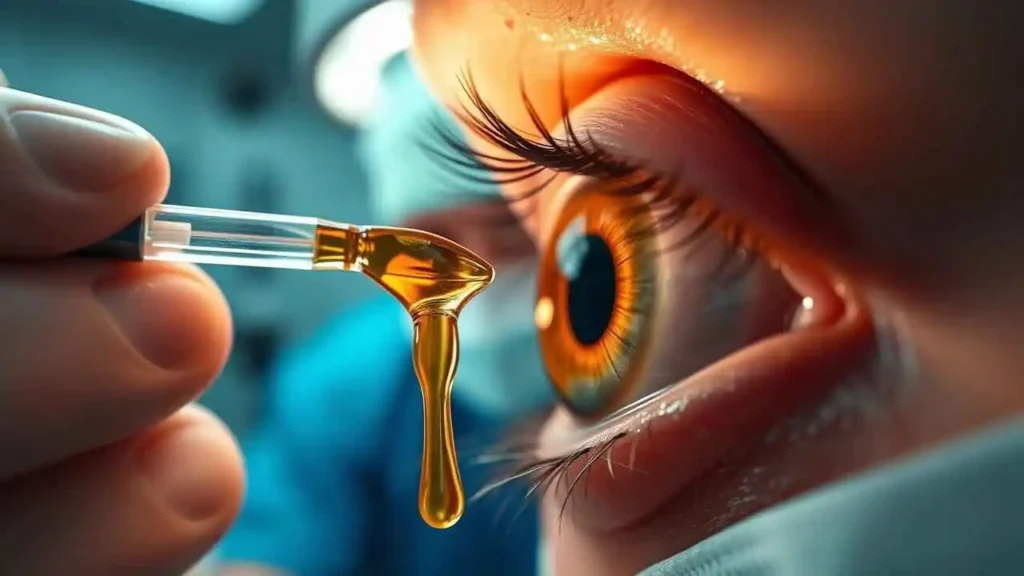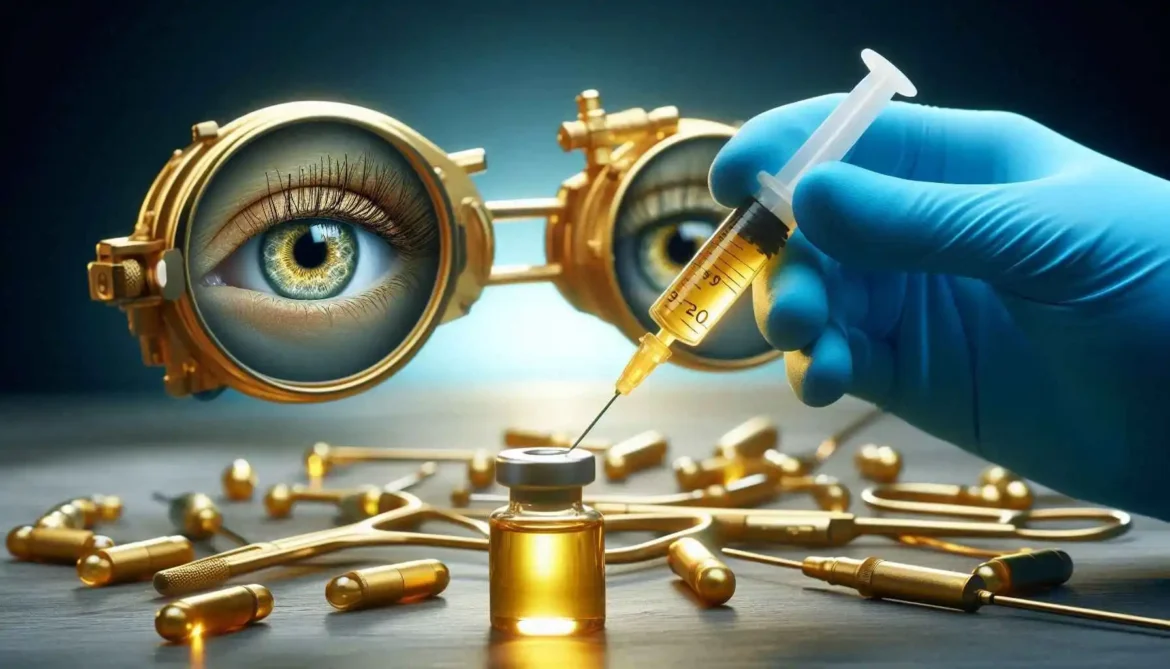
Golden Injections for Eyesight Recovery Without Surgery: Is This Development Actual?
The prospect of recovering lost eyesight without undergoing invasive surgery is a powerful and hopeful one. When terms like “golden injections” enter the conversation, they conjure images of revolutionary breakthroughs – simple, painless solutions that restore vision. We often hear whispers or read headlines about such advancements. This naturally leads us to ask: are these “golden injections” for eyesight recovery without surgery an actual, widespread development, or is it more complex than the promising title suggests?
As we delve into this topic, we aim to provide an informational perspective, separating the reality of current medical treatments from potential hype. We will explore the existing non-surgical injection therapies, what they can achieve, their limitations, and what the future might hold.
Understanding the Need for Non-Surgical Options
For many eye conditions that lead to vision loss, the damage happens within the delicate structures of the retina, the light-sensitive tissue at the back of the eye. Conditions like Age-Related Macular Degeneration (AMD), Diabetic Retinopathy (DR), and Retinal Vein Occlusions (RVO) often involve abnormal blood vessel growth (neovascularization) or leakage and swelling (edema) within the retina. These processes can rapidly destroy photoreceptor cells crucial for sight.
Historically, treatments for some of these conditions were limited or involved laser surgery or more invasive vitreoretinal surgery. While surgery remains vital for many conditions (like cataracts, detached retinas, or complex trauma), it carries inherent risks and recovery times. The medical community has long sought less invasive ways to target the underlying disease processes directly within the eye. This is where the concept of injections comes into play.
The Reality: The “Golden” Impact of Anti-VEGF Injections
When people refer to significant non-surgical injection treatments that have revolutionized care for certain blinding diseases, they are most likely talking about Anti-VEGF injections. These treatments are, in many ways, the “golden standard” for managing conditions driven by abnormal new blood vessels or leakage.
VEGF stands for Vascular Endothelial Growth Factor. It’s a protein that plays a crucial role in the formation of new blood vessels. In conditions like wet AMD, proliferative diabetic retinopathy, and some types of RVO, the eye produces excessive amounts of VEGF, leading to fragile, leaky blood vessels that grow in places they shouldn’t, causing bleeding, swelling, and scarring in the retina.
Anti-VEGF drugs work by binding to and blocking the action of VEGF. By doing this, they can:
- Stop the growth of new, abnormal blood vessels.
- Reduce leakage from existing abnormal vessels.
- Decrease swelling in the retina (macular edema).
The development and widespread use of anti-VEGF injections (such as bevacizumab, ranibizumab, aflibercept, and brolucizumab) have been nothing short of revolutionary for the treatment of wet AMD and severe diabetic eye disease. Before anti-VEGF therapy, wet AMD often led to rapid, irreversible vision loss. Now, with timely and consistent injections, many patients can preserve their existing vision, and some even experience significant improvement, regaining reading or driving ability that they had lost.
Are These the “Golden Injections”?
Yes, for specific conditions where abnormal blood vessels or leakage are the primary problem, anti-VEGF injections are the current “golden” non-surgical treatment. They are administered directly into the vitreous gel in the eye (intravitreal injection). While this sounds daunting, the procedure is quick, performed in a sterile environment, and usually involves minimal discomfort due to numbing drops.
However, it is crucial to understand what these injections actually do and for which conditions they are effective. They are not a universal cure for all types of vision loss.
“Medicine is a science of uncertainty and an art of probability.” – attributed to Dr. William Osler (adapted) – While treatments like anti-VEGF offer significant probabilities of preserving or improving vision for specific conditions, the outcome is not always a certainty, and individual responses vary.
What These Injections Can and Cannot Treat
To clarify the scope of these “golden injections,” let’s look at what they are used for and what conditions require different approaches.
| Condition Treated Effectively by Anti-VEGF Injections (Often Resulting in Preservation/Improvement) | Conditions Not Typically Treated by These Injections (Require Different Therapies) |
| Wet Age-Related Macular Degeneration (Wet AMD) | Dry Age-Related Macular Degeneration (Dry AMD – different form) |
| Diabetic Macular Edema (DME – swelling associated with Diabetic Retinopathy) | Cataracts (clouding of the lens – requires surgery) |
| Proliferative Diabetic Retinopathy (PDR – advanced stage with new vessel growth) | Glaucoma (optic nerve damage – requires drops, laser, or surgery) |
| Retinal Vein Occlusion (RVO) with Macular Edema | Refractive Errors (nearsightedness, farsightedness, astigmatism – requires glasses, contacts, or laser surgery like LASIK) |
| Choroidal Neovascularization due to other causes (e.g., pathological myopia) | Optic Nerve Damage (from conditions like stroke, trauma, certain diseases) |
| Retinitis Pigmentosa & other inherited retinal dystrophies (often no current cure, research ongoing) | |
| Severe Retinal Detachment (requires surgery) |
This table highlights a critical point: the “golden injections” are highly effective, even revolutionary, but their power is specific to diseases driven by abnormal blood vessel issues. They do not magically reverse damage from other causes. Furthermore, for conditions like Wet AMD or DME, treatment often involves repeated injections over many months or years to manage the chronic nature of the disease. It’s more accurate to describe the outcome as vision preservation and potential improvement rather than a guaranteed return to perfect eyesight, especially if significant damage occurred before treatment began.
Other Types of Injections
While anti-VEGF is the most common, other types of intravitreal injections are used for specific situations:
- Steroid Injections: Corticosteroids (like triamcinolone or a fluocinolone acetonide implant) can be injected into the eye to reduce inflammation and swelling, particularly in certain cases of diabetic macular edema or retinal vein occlusion that don’t respond well to anti-VEGF, or when inflammation is a primary driver.
- Antibiotic/Antifungal Injections: Used to treat severe eye infections (endophthalmitis).
These also represent non-surgical interventions delivered via injection, each serving a specific purpose.
The Process and Patient Experience
Receiving an intravitreal injection is a routine procedure for ophthalmologists specializing in retinal diseases.
The steps typically involve:
- Application of anesthetic eye drops to numb the eye’s surface.
- Cleaning the eye and surrounding area thoroughly with an antiseptic solution to prevent infection.
- Using a small clip (speculum) to gently keep the eyelids open.
- Asking the patient to look in a specific direction.
- Administering the injection with a very fine needle into the white part of the eye (sclera).
- Applying antibiotic drops or ointment.
The injection itself takes only a few seconds. Patients might feel a slight pressure or sensation, but usually no pain due to the numbing drops. Vision might be blurry immediately afterward, and some patients experience mild discomfort, redness, or the sensation of a “floater” (a small bubble of air or medication) for a day or two.
The frequency of injections varies depending on the condition and the specific drug used. Often, patients receive monthly injections initially, which may then be tapered based on the eye’s response. The need for ongoing treatment underscores that, for many conditions, this is management rather than a one-time cure.
The “Golden” Future? Emerging Developments
While anti-VEGF therapy is well-established, research continues to improve treatments and explore new “golden” possibilities. Some exciting areas include:
- Longer-Acting Drugs: Scientists are developing new formulations and delivery methods (like implants) to reduce the frequency of injections required, easing the burden on patients.
- Combination Therapies: Exploring drugs that target multiple pathways involved in disease progression, not just VEGF.
- Gene Therapy: Investigating ways to deliver genes into retinal cells via injection that could potentially allow the eye itself to produce therapeutic proteins (like anti-VEGF) on a continuous basis, potentially reducing or eliminating the need for frequent injections.
- Cell-Based Therapies: Research into injecting stem cells or other progenitor cells to repair damaged retinal tissue, though this is still largely experimental.
These ongoing developments hint at a future where eye injections could become even more effective, longer-lasting, and potentially applicable to a broader range of conditions.
Addressing the “Actuality”
So, let’s circle back to the core question: is the development of “golden injections for eyesight recovery without surgery” actual?
Yes, in the sense that highly effective, non-surgical injection therapies do exist and have revolutionized the treatment of several major causes of vision loss, preserving and often improving sight for millions. For patients with Wet AMD, Diabetic Macular Edema, or Retinal Vein Occlusions, these treatments are indeed “golden” due to their significant impact and the avoidance of traditional surgery for these specific conditions.
However, the term “golden injections for eyesight recovery without surgery” can be misleading if interpreted as a universal fix for any vision problem or a guaranteed return to perfect vision for everyone. They are specific tools for specific diseases. The “recovery” aspect is often more about preserving functional vision and sometimes regaining some lost acuity, rather than reversing all damage.





